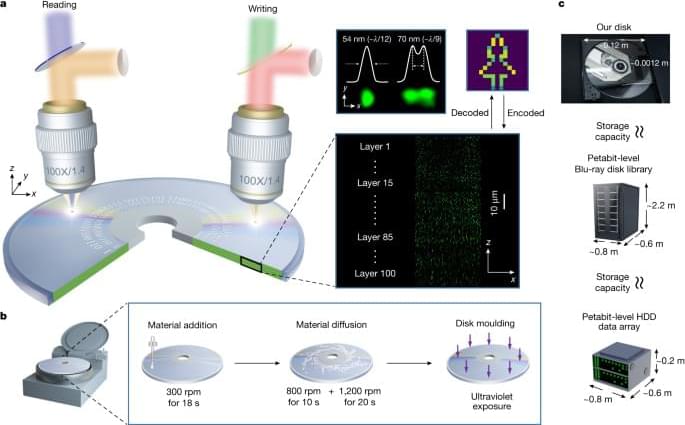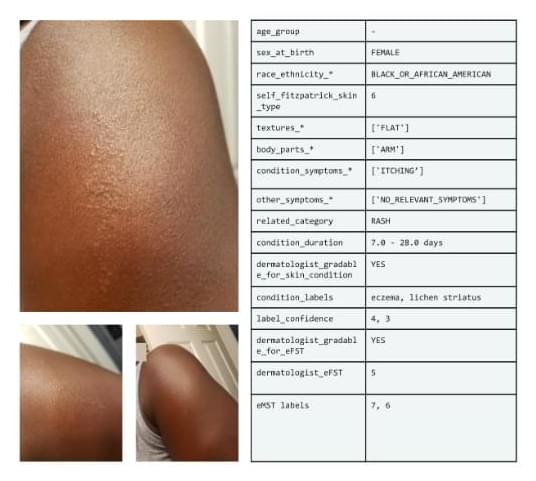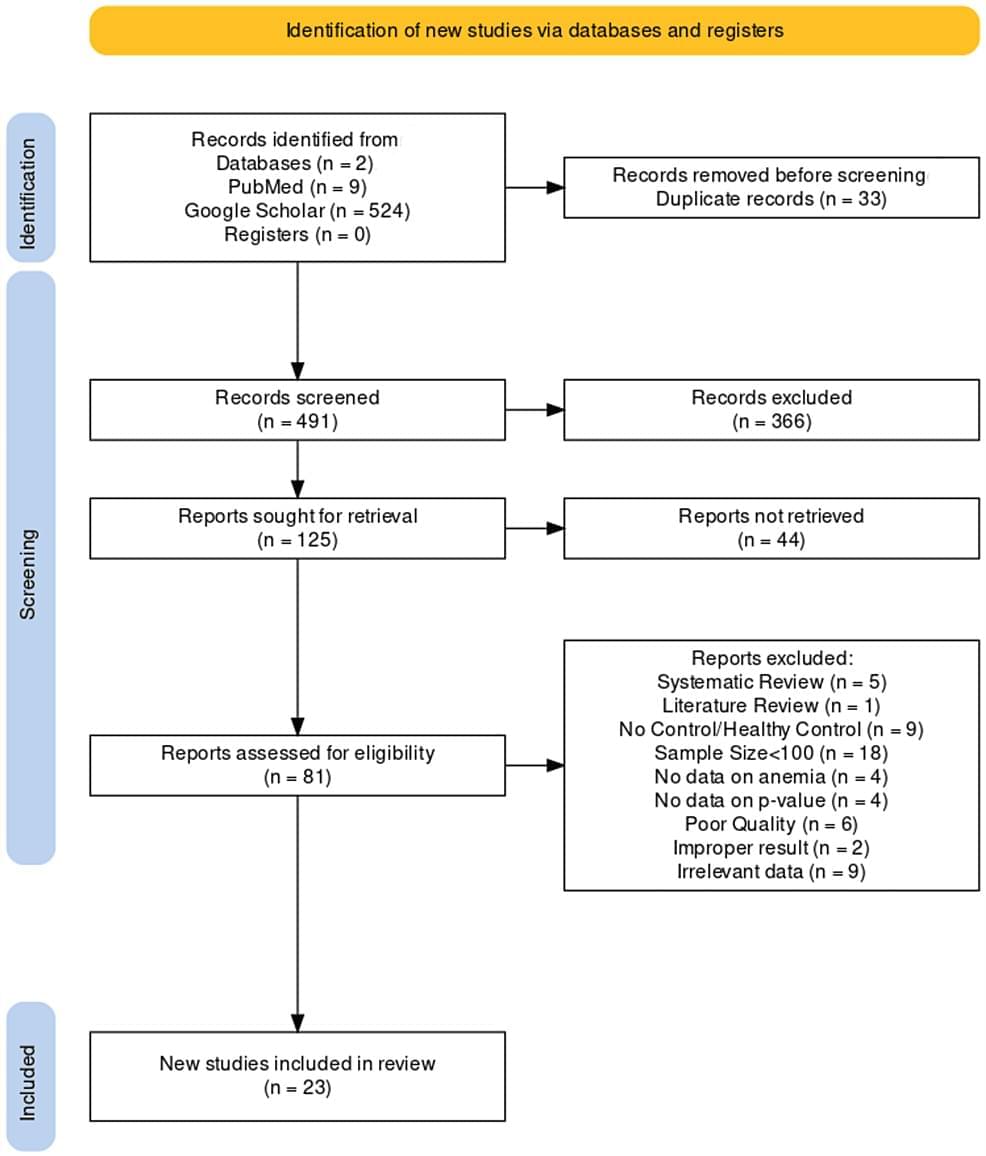Optical nanoscale disk memory with petabit-level capacity is developed by extending the recording architecture to three dimensions with hundreds of layers, and exabit-level storage can be achieved by stacking the disks into arrays.
Google Research releases the Skin Condition Image Network (SCIN) dataset in collaboration with physicians at Stanford Med.
Designed to reflect the broad range of conditions searched for online, it’s freely available as a resource for researchers, educators, & devs → https://goo.gle/4amfMwW
#AI #medicine
Health datasets play a crucial role in research and medical education, but it can be challenging to create a dataset that represents the real world. For example, dermatology conditions are diverse in their appearance and severity and manifest differently across skin tones. Yet, existing dermatology image datasets often lack representation of everyday conditions (like rashes, allergies and infections) and skew towards lighter skin tones. Furthermore, race and ethnicity information is frequently missing, hindering our ability to assess disparities or create solutions.
Essential tremor is a movement disorder that causes involuntary, rhythmic shaking (tremor), especially in the hands. It is distinguished from tremor that results from other disorders or known causes, such as Parkinson’s disease or head trauma. Essential tremor usually occurs alone, without other neurological signs or symptoms. However, some experts think that essential tremor can include additional features, such as mild balance problems.
Essential tremor usually occurs with movements and can occur during many different types of activities, such as eating, drinking, or writing. Essential tremor can also occur when the muscles are opposing gravity, such as when the hands are extended. It is usually not evident at rest.
In addition to the hands and arms, muscles of the trunk, face, head, and neck may also exhibit tremor in this disorder; the legs and feet are less often involved. Head tremor may appear as a “yes-yes” or “no-no” movement while the affected individual is seated or standing. In some people with essential tremor, the tremor may affect the voice (vocal tremor).
Convulsions developed due to temperatures above 38°C (100.4°F) are termed as febrile seizures (FS). These seizures are not caused by any central nervous system infections (CNS) or any metabolic abnormalities. Essentially, it occurs in individuals without a prior history of afebrile seizures [1]. It is the most commonly observed seizure type in children under five years of age [1]. Roughly one-third of children who have one FS may experience a second. Among children with simple FS, 1% to 2% may develop epilepsy. In contrast, those with complex FS have a higher risk, with 6% to 8% later being diagnosed with epilepsy [2].
Iron deficiency and iron deficiency anemia (IDA) are pervasive on a global scale. Roughly 30% to 40% of people worldwide suffer from IDA, with the majority residing in developing nations [3]. IDA has stood as the primary contributor to the healthcare burden in India over the last 10 years [4]. Iron deficiency can adversely affect the developing brain in multiple ways. It can impair hippocampal neuron growth and disrupt the myelination process, which insulates nerve fibers for efficient signaling. This deficiency can also impact the metabolism of neurotransmitters such as monoamines and aldehyde oxidase, resulting in lower neurotransmitter levels and a potential decrease in the seizure threshold. Moreover, low serum ferritin levels in conjunction with fever can compound the adverse effects on the brain, potentially leading to seizures [5]. Notably, it’s worth mentioning that the peak ages for FS and IDA coincide [5]. While certain studies identified a link between FS and anemia resulting from iron deficiency [6–16], other research yielded divergent findings [17–20]. The primary objective of this study is to find the association between IDA and FS in children by doing a systematic review of the literature of the last 10 years. The secondary objective is to understand the significance of the iron profile in FS.
This study is a systematic review done in accordance with Preferred Reporting Items for Systematic Review and Meta-analyses (PRISMA) guidelines.
Like many cancers, skin cancers — including melanoma, basal cell carcinoma, and squamous cell carcinoma — start as precancerous lesions. This WebMD slideshow tells you how to spot the early warning signs of skin cancer and seek treatment.
NASA is developing autonomous space robots to build shelters, solar arrays, and more on the moon and Mars.
Oregon State University scientists studying ways to filter greenhouse gases from the air recently discovered that when molecules of the metal vanadium are bound with oxygen molecules as peroxide, they can pull carbon dioxide from the air. The carbon molecules can be siphoned off using a small amount of energy that’s then funneled into other uses, like making limestone for buildings or enhancing the atmospheric carbon in greenhouses, accelerating plant growth.
The process could help improve nascent technologies in capturing carbon dioxide from the air to slow the impacts of global climate change. The discovery was published in the journal of the Royal Society of Chemistry in December.
Carbon dioxide is responsible for about two-thirds of the atmospheric heating causing global climate change, and it is primarily released in the burning of fossil fuels for energy, according to the National Oceanic and Atmospheric Administration.
In an observational study, noninvasive respiratory support was associated with disease slowing for ALS patients, regardless of stage or site of onset.









